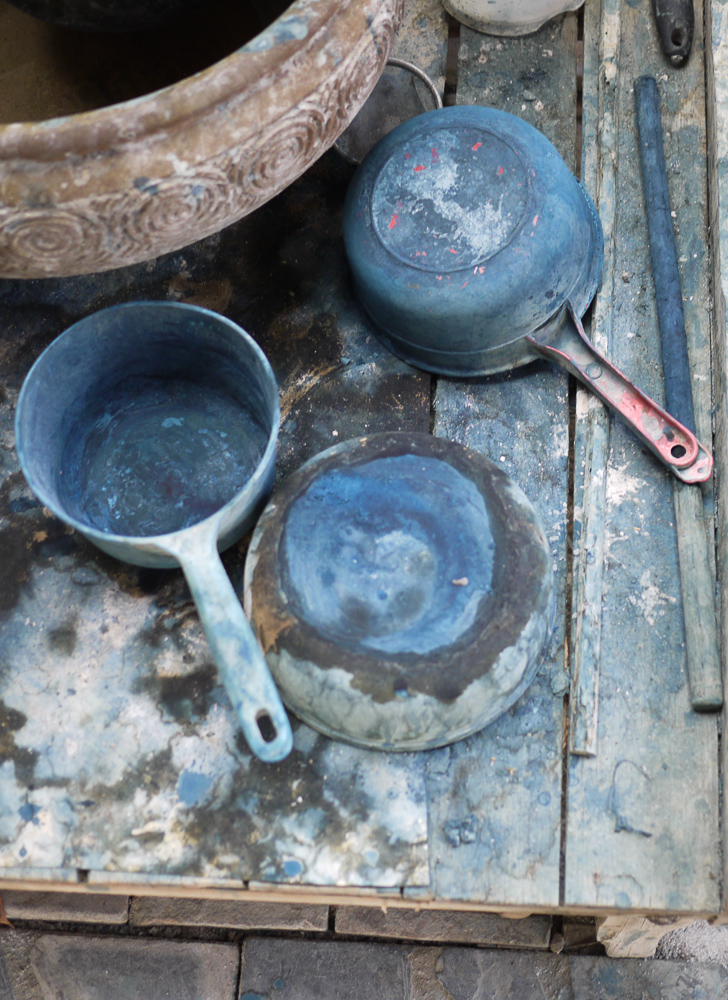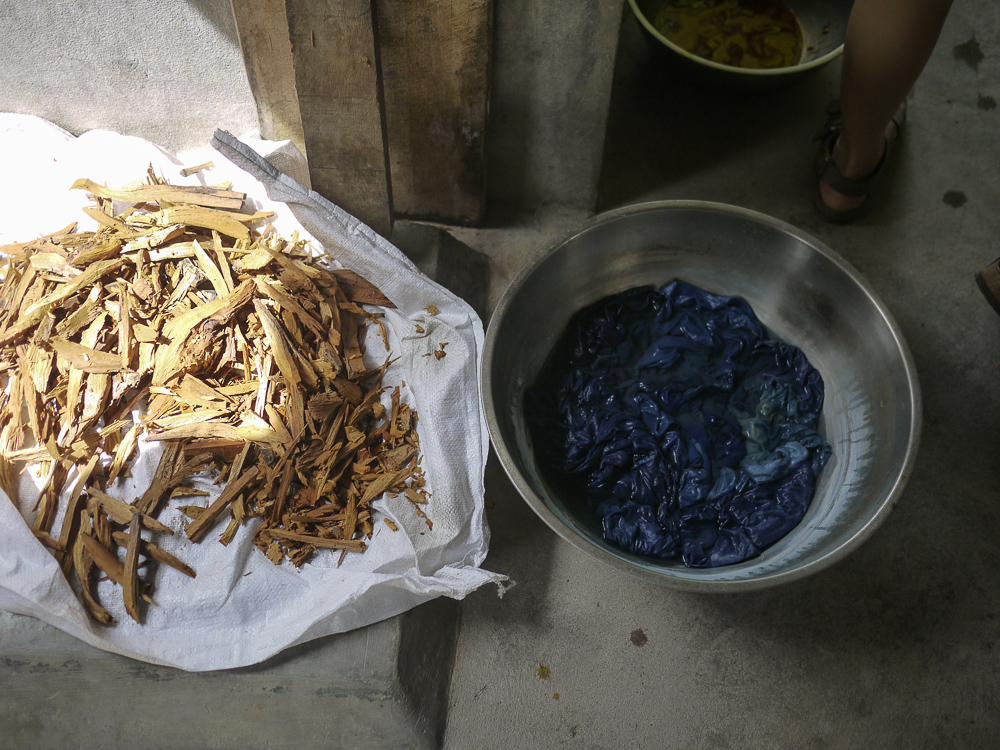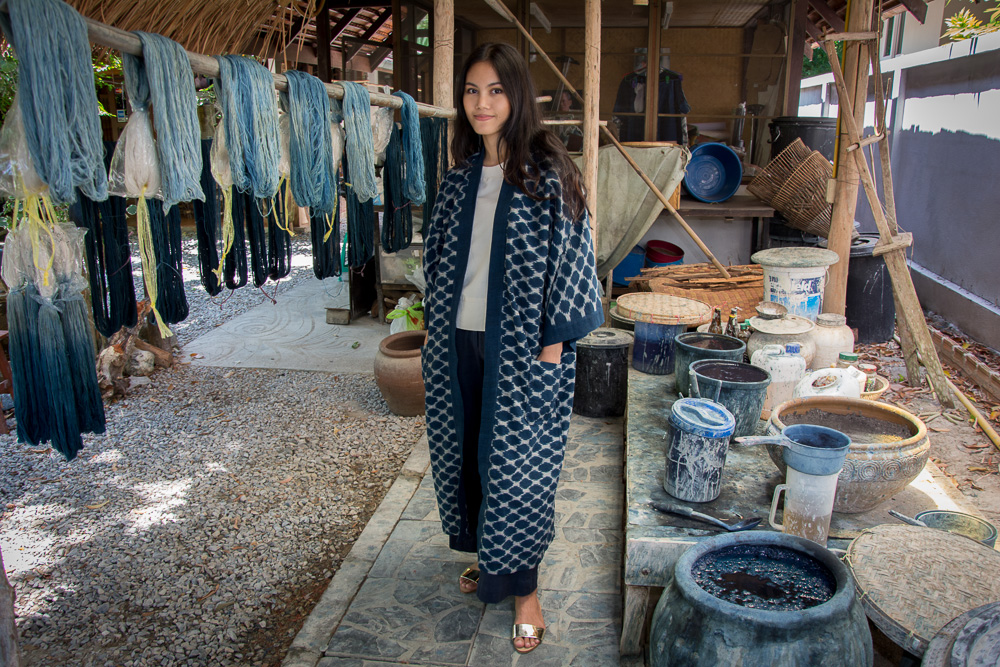Based in the foothills of Doi Suthep mountain in Chiang Mai, Thailand, Studio Naenna Textiles specializes in silk and cotton fabrics using traditional Thai motifs. Their handwoven, naturally-dyed textiles honor the heritage craft of the region and the weavers who make them.
Studio Naenna's founder, Patricia Cheesman, was teaching pottery and building kilns as part of a UN project in Laos during the early 1970’s. During Lao Revolution of 1975, villagers fled to the capital city of Vientiane and many took their heritage cloths to sell. This was the beginning of Patricia’s research into Lao and Thai textiles. Today, she is an acknowledged textile expert who has written five books, is a frequent conference lecturer, and teaches at Chiang Mai University.
In 1988, Patricia began Studio Naenna to revitalize the Northern Thai wisdom of intricate handwoven patterns, a fair trade business that she now runs with her daughter Lamorna Cheesman. The mother-daughter team sell textiles, clothing, and decorative pieces – and they run workshops about dyeing and weaving that are as inspiring as they are informative.






It was at one of these indigo dyeing workshops in 2013 that I first met Patricia and Lamorna. As a fashion designer from New York City, I was interested to learn about their natural dyeing processes and the hand-weaving of heritage textiles. After that first visit, I knew that I'd like to design contemporary clothing with Studio Naenna's handmade eco textiles—so I moved to Chiang Mai in 2014, settling into a house just a short bicycle ride from the textile studio.
Natural Dyes
Most of Studio Naenna's cotton and silk has been dyed with natural plant-based dyes derived from local materials. Blood-orange colored annatto seeds are gathered from the pods of the achiote tree, known locally as the "lipstick tree" because women have long used the seeds to color their lips. Jackfruit wood can be boiled down into yellow dye, and ebony fruit produces grey to black color.
Making blue dye from indigo plants requires a process of fermentation. First leaves are harvested, bundled, and soaked overnight. In the morning the water is blue as if by magic! The strained water then is mixed with builders lye, oxidized through beating, and left to settle. The paste that precipitates to the bottom is collected and used for dyeing. (Read the full story of how this special plant is used to create 100% natural blue dye in THE KINDCRAFT's report: Indigo from Plant to Paste.)
Our Indigo Collection was created with textiles that were dipped again and again as yarns into the indigo vat that Patricia has kept alive and nurtured for 25 years. After several dips and oxidization, the yarns are then washed, dried outdoors, and later handspun and handwoven into fabric by Weavers for the Environment.







Weavers for the Environment
Studio Naenna supports Weavers for the Environment, a women's organization that began in 1992 to benefit weavers while documenting their indigenous knowledge of plant dyeing and weaving techniques. It is also important that the women gain confidence and a sense well-being working in their villages to support their families rather than migrating to cities for jobs.
On a hot, dry day in April 2015, Lamorna and I drove an hour south of Chiang Mai to the village where Weavers for the Environment is located. I met the group of women who create eco-textiles for Studio Naenna – women that Lamorna has known for most of her life having grown up in Chiang Mai at the textile studio.



Master Weaver Vi, Rut, and Yao are specialists of weft ikat textiles - a type of patterned textile that is achieved through resist-dyeing yarns before they are woven. Ikat is a long and process which takes time and skill. First, a pattern is created by Studio Naenna and the women must interpret the design for it to fit the fabric width. The next task is winding the notches of the frame, each of which represents a step in the design where the repeat is determined by the amount of threads that are wrapped at the notches.
Next, plastic ties are tightly tied onto the yarns according to the pattern so that those portions will resist dye. After the yarns are brought to Studio Naenna for dyeing, they are returned to Weavers for the Environment and, once untied, reveal the pattern in the undyed space. The yarns are placed onto the swift and then unwoven onto tins, from those tins to the spools, and finally to the loom for weaving. At this point, the women will see if they successfully planned the ikat pattern when the the design lines up as they throw the shuttle back-and-forth, weaving their special fabrics.






The Collaboration
A year-and-a-half after our initial meeting over the indigo vat, Lamorna and I decided that Studio Naenna and THE KINDCRAFT should collaborate on a project: I would design contemporary clothing that would be made from Studio Naenna's quality handwoven textiles.
It was a privilege to choose what textiles I wanted to work with, and I decided to make two small collections: one focused on indigo-dyed textiles, and another group featuring ikat fabric. I deliberately kept my designs minimal to highlight the beauty of the textiles. After I had designed the two seasonless womenswear collections, Lamorna and I worked with local tailors in Chiang Mai to plan, fit, and assemble the collection which was made entirely in an ethical environment.
Our Indigo Collection has five contemporary shapes: a boxy woven tee made with a navy indigo with medium indigo blue piecing at the sleeves and hem, a wide-leg crop pant, and a pleated short. The group also includes a midi skirt, and a tropical kaftan made with a silk/ cotton indigo ikat textile. I also worked with a Chiang Mai artist named Peeraphong Rattanaseenurangkul to create a shibori pattern that he hand-dyed with indigo for the boxy woven tee and the pleated short.






The Ikat Collection focuses on the beautiful cotton pattern woven by Weavers for the Environment. The monochrome black and grey ikat appears as an easy over-the-head column dress, a boxy woven tee, and a kimono which reverses cleanly from ikat to solid grey. Our shirt dress is available in solid black, cream, and abstract stripe fabric. We used a super-soft diamond twill for the wide-leg pant.







Design and Styling: Lauren Lancy, co-founder of THE KINDCRAFT. Textiles: Patricia Cheesman and Lamorna Cheesman, Studio Naenna. Model: Ying Wisanee.
Video: Marisa Marchitelli and Ulises Baque. Video Music: "Hovgaard" by Longlake, licensed through Musicbed. Audio Post: Franklin Henderson, Live ANMLZ Studio, New York and Justin Lancy.
Thank you to The Four Seasons Resort Chiang Mai, Studio Naenna, and Marisa Marchitelli for hosting our photo shoot.

